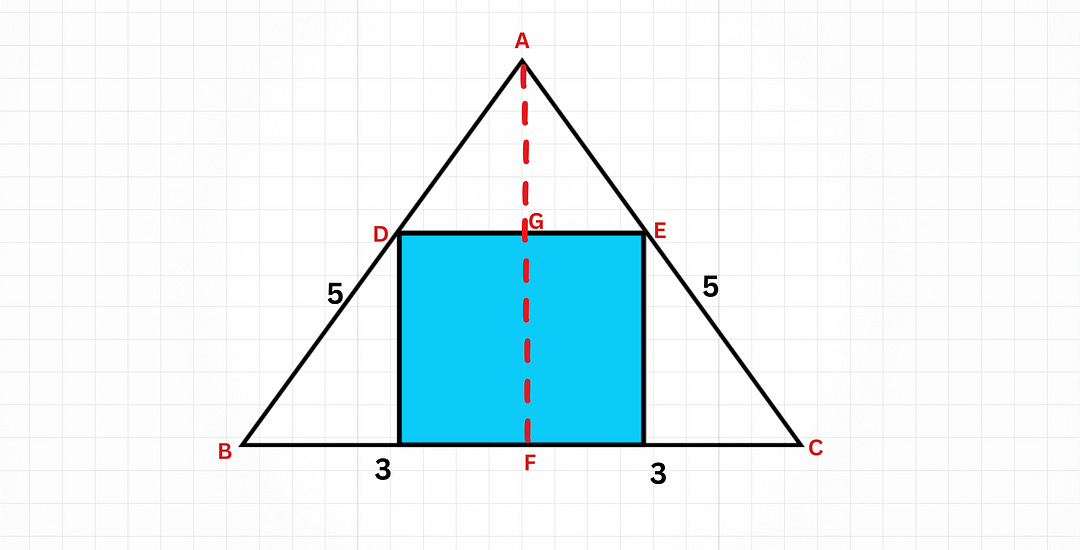I looked at this problem for about ten seconds.
I knew if I had to find the area of the square, all I needed was to get the length of one side. This was where I got stuck!
How would you find a side of the square?
I’d love to see your approach in the comments!
Hint: Think about the Pythagorean theorem
Feel free to get a pen and a paper and shoot at this puzzle. If you got 144/25 sq. units, high five! You’re a math rock star, but stick around and see if our approach matches. If you don’t get the answer right, don’t sweat it, follow along!
Are you ready? Let’s dive in!
Two things came to my mind when I attempted solving: first, the Pythagorean theorem; second, similar triangles.
Before we go further, let’s label a few points on the shape.
If we can get the height of the triangle, we’ll be on our way to getting the height of the square.
How do we achieve this?
The Pythagorean theorem is our go-to! Think about any of the right-angled triangles, let’s say triangle AFC. We know two of its sides, so we can safely apply the Pythagorean theorem to find the third side. Cool! 😄
According to the Pythagorean theorem, the square of the hypotenuse is equal to the sum of the squares of the other two sides.
Considering triangle AFC, AC is the hypotenuse, and if we apply the theorem, we have:
This gives us:
This means:
So, the height of the triangle is 4 units. Great!
Since the height of the square is a part of this total height, can we use this information to determine the square’s height? Let’s see!
Clearly, triangle ABC is isosceles. Why? Two sides of the triangle are equal.
Look at the shape carefully. There are two triangles — ADE and ABC.
These triangles are similar. Why? Because the angles are the same.
Since they are similar, it means triangles AGE and AFC are similar, and they have the same ratio of corresponding sides.
Let us label the height of the square x.
If the height of the square is x, then line AG is 4-x (since the total height is 4).
GF is x, DE is x (a property of a square), therefore GE is (1/2)x
Since triangles AGE and AFC are similar, they have the same ratio of corresponding sides.
This means
4:3 = (4-x): (1/2)x
From here, we have:
There we go! We have found the side of the square. How nice!😄
What more do we need? Nothing!
The square of one side of a square gives its area!
Therefore the area of the square (12/5)² = 144/25 sq. units!
Thank you for reading! I hope this was fun! If so, consider giving a few claps 👏 and a follow. You can also follow me on X(Formally Twitter) for more intriguing math puzzles.











